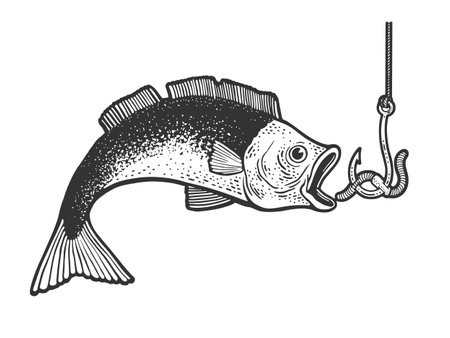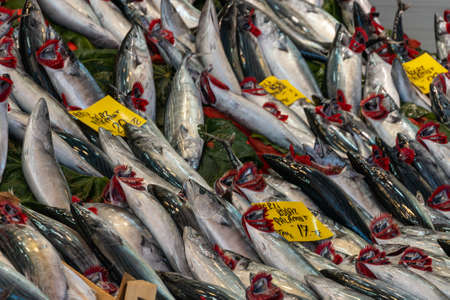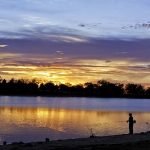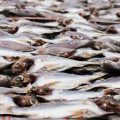1. Understanding Striped Bass Behavior
To increase your chances of success when trolling for striped bass, its essential to understand their behavior—especially their seasonal patterns, feeding habits, and migration routes. Striped bass, also known as stripers or rockfish in some regions, are highly migratory and respond to changes in water temperature, bait availability, and spawning instincts.
Seasonal Patterns
Striped bass migrate based on the seasons, which plays a big role in where and how you should troll for them. In the spring, they move from deeper waters into rivers and estuaries to spawn. During summer, they often head back out to deeper, cooler waters. Fall brings another migration as they chase baitfish along the coastlines, and in winter they tend to stay in deeper offshore areas where water temperatures are more stable.
| Season | Striped Bass Location | Trolling Tips |
|---|---|---|
| Spring | Rivers, estuaries, shallow bays | Troll near river mouths with slow-moving lures |
| Summer | Deeper coastal waters | Use downriggers or lead-core lines to reach deeper fish |
| Fall | Coastlines, following baitfish schools | Troll near structure where bait congregates |
| Winter | Offshore deep channels or warm-water discharges | Spooning or slow trolling over deep humps can be effective |
Feeding Habits
Striped bass are opportunistic feeders that primarily eat smaller fish like menhaden (bunker), herring, shad, and anchovies. They also feed on crustaceans and squid when available. When trolling, it’s important to match your lures to the size and type of local forage fish. Keep an eye out for diving birds or surface bait activity—these signs usually mean stripers are actively feeding nearby.
Bait Preferences by Region
| Region | Common Forage Fish |
|---|---|
| Northeast (e.g., Cape Cod) | Menhaden, mackerel, sand eels |
| Mid-Atlantic (e.g., Chesapeake Bay) | Shad, herring, perch fry |
| Southeast (e.g., Carolinas) | Mullet, anchovies, shrimp |
Migration Routes
The Atlantic striped bass population follows a well-known migration path along the East Coast of the United States. They typically winter off the coast of North Carolina and migrate northward up to Maine during the warmer months. Knowing these routes helps you plan your trips around peak activity times.
Main Migration Timeline (Atlantic Coast)
- March – April: Begin moving north from wintering grounds off North Carolina.
- May – June: Arrive in Mid-Atlantic regions like Chesapeake Bay and Delaware Bay.
- July – August: Reach New England waters including Long Island Sound and Cape Cod.
- September – November: Head south again following bait runs along the coast.
By learning these behavioral patterns, youll be better equipped to figure out when and where to troll for striped bass throughout the year. Timing your trips with their natural movements can make all the difference between an empty cooler and a day full of action.
2. Essential Trolling Gear and Setup
When it comes to trolling for striped bass, having the right gear makes all the difference. Whether youre fishing in the Chesapeake Bay, off the coast of New Jersey, or trolling in the Hudson River, youll want a setup that matches the conditions and helps you cover water efficiently. Let’s break down the essential equipment you’ll need to maximize your chances of hooking into big stripers.
Rods and Reels
Trolling requires sturdy rods with enough backbone to handle heavy lures and the fight of a strong striper. Look for rods in the 66″ to 8 range with medium-heavy to heavy power. Pair these with conventional reels that have a good line capacity and a smooth drag system.
| Gear | Recommended Specs | Notes |
|---|---|---|
| Trolling Rod | 66″–8, Medium-Heavy to Heavy Power | Fiberglass or composite blanks preferred for durability |
| Trolling Reel | Conventional, Levelwind, High Line Capacity | Look for models with line counters if youre running multiple lines |
Fishing Line
The type of line you use can affect lure depth and sensitivity. For most striped bass trolling setups, braided line is a popular choice due to its low stretch and high strength-to-diameter ratio. However, monofilament is still used by many anglers who prefer its shock absorption and ease of handling.
| Line Type | Pound Test Range | Best Use |
|---|---|---|
| Braided Line | 30–65 lb test | Deep trolling, better feel, less stretch |
| Monofilament Line | 20–50 lb test | Softer presentation, forgiving on strikes |
| Fluorocarbon Leader | 30–50 lb test | Adds invisibility near lure; abrasion-resistant around structure |
Lures for Trolling Striped Bass
Your lure selection should mimic baitfish like bunker (menhaden), herring, or shad—depending on whats local to your area. Popular choices include umbrella rigs, mojo rigs, deep-diving plugs, and soft plastics rigged on jig heads.
| Lure Type | Description & Use Case |
|---|---|
| Umbrella Rig | Mimics a school of baitfish; ideal for covering large areas at mid-depths. |
| Mojo Rig (Heavy Jig + Trailer) | Sinks deep quickly; perfect for bottom-hugging stripers in deeper water. |
| Diving Plugs (e.g., Stretch 30) | Covers specific depth zones; great for targeting suspended fish. |
| Soft Plastics on Jig Heads | Effective when fish are feeding close to shore or structure. |
Planers and Downriggers
If you want to get your lures deep without adding too much weight directly to your line, planers and downriggers are key tools. They help position your bait at specific depths where striped bass often feed.
Planers:
A planer is a device that attaches inline with your mainline and dives as you troll. When a fish hits, it releases tension and allows you to fight the fish without the resistance of the planer. Theyre great for medium-depth presentations.
Downriggers:
A downrigger uses a weighted ball lowered by cable to place your bait at exact depths. Your line clips onto a release connected to the ball. Once a striper strikes, your line pops free so you can reel in without fighting added weight. Ideal for deep water trolling.
Tips for Using Planers & Downriggers:
- Troll at consistent speeds: This keeps your lures running true and at target depths.
- Avoid sharp turns: It prevents tangles when using multiple lines or umbrella rigs.
- Add flashers or teasers: These increase visibility and attract more fish to your spread.
- Use sonar/fish finders: Helps locate bait schools and adjust depth settings accordingly.
The right combination of gear not only increases your success rate but also makes each trip more enjoyable. With quality rods, reels, smart lure choices, and proper depth control tools like planers or downriggers, you’ll be well-equipped to chase trophy-sized striped bass all season long.

3. Choosing the Right Lures and Baits
When it comes to trolling for striped bass, picking the right lures and baits can make all the difference. Striped bass are opportunistic feeders, and what works best can vary depending on the water conditions and time of year. Whether youre going with artificial lures or natural baits, understanding your options will help you hook more fish.
Artificial Lures That Work
Artificial lures are a popular choice for trolling because they allow you to cover more water quickly. Here are some top picks that consistently produce results:
| Lure Type | Description | Best Conditions |
|---|---|---|
| Umbrella Rigs | Mimics a school of baitfish; ideal for deeper trolling. | Spring and fall in open waters |
| Swimbaits | Soft plastic lures that resemble real fish. | Clear water with moderate current |
| Spoons | Flashy, wobbling action attracts strikes. | Sunny days with choppy water |
| Diving Plugs | Dives to specific depths; great for targeting suspended fish. | Summer months in deeper channels |
Natural Baits That Stripers Love
If youre leaning toward live or cut bait, striped bass have a few favorites. Natural baits can be especially effective in colder water when stripers are less aggressive.
| Bait Type | Presentation Tips | Best Season |
|---|---|---|
| Eel | Troll slowly near the bottom; use circle hooks to avoid gut hooking. | Fall and early winter |
| Bunker (Menhaden) | Use fresh chunks or live-line them near schools of baitfish. | Spring and summer |
| Mackerel | Cut into fillets or troll whole behind planer boards. | Early spring and late fall |
How Conditions Affect Your Choice
Water Clarity
In clear water, go with more natural-colored lures like silver or white. In stained or murky water, brighter colors like chartreuse or fire tiger help stripers spot your lure more easily.
Temperature & Seasonality
| Season | Lure/Bait Recommendations |
|---|---|
| Spring | Bunker, swimbaits, diving plugs near spawning grounds |
| Summer | Spoons and umbrella rigs in deeper, cooler waters |
| Fall | Eels and mackerel along migration routes; swimbaits work well too |
| Winter | SLOW trolling with eels or deep-diving plugs near structure |
Trolling Speed Tip:
A good rule of thumb is to troll at 2 to 4 mph. Adjust based on lure type—faster for spoons and plugs, slower for live bait like eels.
The key takeaway is to match your lure or bait choice to the conditions youre fishing in. Pay attention to water temperature, clarity, and seasonal patterns to stay one step ahead of those elusive stripers.
4. Trolling Techniques and Speeds
When it comes to trolling for striped bass, mastering the right techniques and knowing the ideal speeds can make all the difference. Whether youre fishing coastal waters, rivers, or large reservoirs, understanding how to present your bait effectively is key to triggering strikes.
Trolling Speeds That Work
Striped bass are known to respond best to a specific range of trolling speeds. Going too fast or too slow might cause them to ignore your lure altogether. Here’s a general guide:
| Trolling Environment | Recommended Speed (MPH) |
|---|---|
| Inshore Coastal Waters | 2.5 – 3.5 |
| Reservoirs and Lakes | 1.8 – 3.0 |
| Rivers with Current | 2.0 – 4.0 (adjust for current) |
Depth Control: Where the Stripers Are
Striped bass often hold at specific depths depending on water temperature, time of day, and baitfish location. Using downriggers, lead core lines, or weighted rigs can help you reach the strike zone more effectively.
| Water Temperature (°F) | Likely Striper Depth (feet) |
|---|---|
| 50 – 60 | 10 – 25 |
| 60 – 70 | 20 – 40 |
| 70+ | 30 – 60+ |
Trolling Patterns That Trigger Strikes
The way you maneuver your boat while trolling can also impact your success rate. Straight-line trolling is simple but sometimes not enough. Try mixing it up with these patterns:
- S-Curve: This pattern causes your lure to speed up and slow down naturally as it swings through turns — mimicking fleeing baitfish.
- Zig-Zag: Useful in open water to cover more area and test different depths across the water column.
- Circular or Figure-Eight: Great around structure like humps or submerged points where stripers may be holding.
Lure Presentation Tips
No matter what speed or depth youre trolling at, make sure your lures are swimming naturally. Check for line twist or spinning baits, which can turn off fish. Use swivels and adjust leader length as needed for realistic action.
Quick Tip:
If you notice youre marking fish on your sonar but not getting bites, try changing just one variable — speed, depth, or lure type — before switching everything up.
Trolling for striped bass is both an art and a science. With the right speed, depth control, and movement patterns, you’ll increase your chances of hooking into those hard-fighting stripers every time you hit the water.
5. Best Locations and Times to Troll
Trolling for striped bass can be incredibly rewarding, especially if you know where and when to go. Across the United States, there are some key hotspots where stripers are known to thrive. Combine the right location with optimal timing, and youll dramatically increase your chances of landing a big one.
Top U.S. Hotspots for Trolling Striped Bass
Striped bass are found along both coasts and in several inland waters. Here are some of the best places in the U.S. to troll for them:
| Location | State | Why Its Great |
|---|---|---|
| Chesapeake Bay | Maryland/Virginia | Largest striped bass spawning area; great spring and fall runs |
| Hudson River | New York | Prime springtime trolling as stripers migrate upriver to spawn |
| San Francisco Bay & Delta | California | Year-round striper action; trolling works well near structure and channels |
| Cape Cod Canal | Massachusetts | Hotspot during summer months; deep channels perfect for trolling |
| Lake Texoma | Texas/Oklahoma | One of the best freshwater striper fisheries in the country |
Best Times of Day to Troll for Stripers
The time of day you choose to troll can make a big difference. Striped bass are more active during certain parts of the day, depending on temperature, light levels, and baitfish movement.
| Time of Day | Trolling Effectiveness |
|---|---|
| Dawn (5 AM – 8 AM) | High – Cooler temps and low light increase striper activity |
| Midday (11 AM – 3 PM) | Low – Stripers tend to move deeper or become less active in bright light |
| Dusk (6 PM – Sunset) | High – Feeding frenzy often occurs before nightfall |
The Role of Tides in Trolling Success
If youre fishing tidal waters like estuaries or coastal bays, paying attention to tide cycles is crucial. Heres a quick guide:
| Tide Phase | Trolling Potential |
|---|---|
| Incoming Tide (Flood Tide) | Excellent – Baitfish move inshore, drawing stripers closer to shorelines and structure |
| Slack Tide (High or Low) | Poor – Minimal water movement leads to reduced feeding activity |


